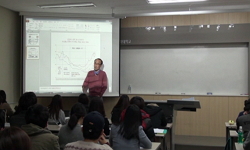ckground: The forward head posture acts as a factor that can cause various neurovascular and musculoskeletal dysfunctions. But searching for a study on quality of life for patient with forward head posture was challenging. Therefore, this study aims t...
http://chineseinput.net/에서 pinyin(병음)방식으로 중국어를 변환할 수 있습니다.
변환된 중국어를 복사하여 사용하시면 됩니다.
- 中文 을 입력하시려면 zhongwen을 입력하시고 space를누르시면됩니다.
- 北京 을 입력하시려면 beijing을 입력하시고 space를 누르시면 됩니다.

Effects of the Cranio-Vertebral Angle, Neck Disability Index, Pain, and Sternocleidomastoid Thickness on the Quality of Life for Patients with Forward Head Posture
한글로보기https://www.riss.kr/link?id=A109037301
- 저자
- 발행기관
- 학술지명
- 권호사항
-
발행연도
2024
-
작성언어
English
- 주제어
-
등재정보
KCI등재
-
자료형태
학술저널
-
수록면
3090-3094(5쪽)
- 제공처
-
0
상세조회 -
0
다운로드
부가정보
다국어 초록 (Multilingual Abstract)
ckground: The forward head posture acts as a factor that can cause various neurovascular and musculoskeletal dysfunctions. But searching for a study on quality of life for patient with forward head posture was challenging.
Therefore, this study aims to find the factors that most affect the quality of life in patients with forward head posture.
Objectives: The purpose of this study was to investigate the correlations between the cranio-vertebral angle (CVA), neck disability index (NDI), pain, and sternocleidomastoid (SCM) thickness of patients with forward head posture and the quality of life of the patients and to figure out important factors that affect the quality of life of the patients with forward head posture.
Design: Cress-sectional study.
Methods: To measure the CVA, the angle at which the visible protrusion of C7 and the ear bead were connected was measured, and the neck disorder index was evaluated using the Korean version of NDI. The degree of pain of the subject was measured using a visual-analog scale (VAS). The SCM thickness was measured using an ultrasound imaging device, and the quality of life was evaluated using the Korean version of the World Health Organization quality of life questionnaire (WHOQL-BREF).
Results: A significant predictive model showing 88% explanatory power for the dependent variable was confirmed, with an appropriate regression equation being found. The factor that most affected patients' quality of life in the forward head posture was confirmed by the SCM thickness.
Conclusion: When applying an intervention to improve a patient's quality of life for patient with forward head posture, an intervention method that improves the SCM thickness should be recommended.
동일학술지(권/호) 다른 논문
-
- 국제물리치료연구학회
- 왕중산
- 2024
- KCI등재
-
- 국제물리치료연구학회
- 박치복
- 2024
- KCI등재
-
- 국제물리치료연구학회
- 김다정
- 2024
- KCI등재
-
- 국제물리치료연구학회
- 이창렬
- 2024
- KCI등재




 코리아스칼라
코리아스칼라



